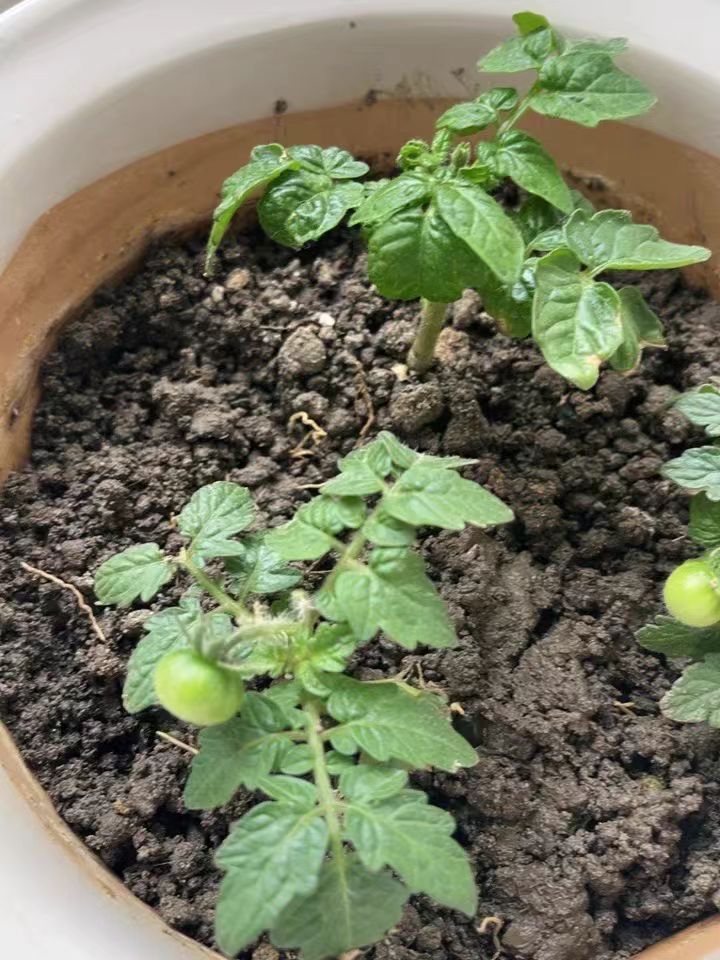Have you ever noticed that fully ripe tomatoes sometimes develop cracks? Not only do these cracks affect their appearance, but they also make tomatoes prone to rotting. In fact, tomato cracking isn’t caused by a single factor—it’s related to their growth characteristics, environmental conditions, and cultivation methods.
1. Natural Growth: Imbalance Between Flesh and Skin
Tomatoes are like "water balloons" with a thin outer skin and juicy flesh inside. As tomatoes ripen, the flesh swells increasingly, but the skin grows more slowly. Like a balloon overinflated, the skin can’t withstand the internal pressure and splits.
Solution: Choose varieties with thick, tough skins, such as those specifically bred for tomato paste. Their resilient skins are less likely to crack.
2. Soil Moisture Fluctuations
If the soil alternates between extreme dryness and sudden heavy watering (or ,heavy rain), tomatoes are prone to cracking. During drought, the flesh "restrains" its growth, but when it absorbs water rapidly after irrigation or rain, it expands quickly. The dry, rigid skin lacks elasticity, similar to parched land cracking in heavy rain.
Solution: Maintain consistent soil moisture—water gently and regularly, avoiding prolonged dryness followed by flooding. In summer, dig drainage ditches ahead of storms to prevent waterlogging.
3. Temperature Stress
Tomatoes thrive in warm, stable environments. Drastic day-night temperature differences (e.g., hot days and cold nights) or prolonged high temperatures can age the skin prematurely, making it hard and inflexible. As the flesh grows during the day but the skin stops at night, internal and external tensions cause cracking.
Solution: For greenhouse cultivation, ventilate to regulate temperature. For outdoor plants, use shade nets in summer to protect tomatoes from intense sunlight.
4. Nutrient Imbalances
Excessive Nitrogen: Overuse of nitrogen fertilizers causes plants to grow luxuriantly (focusing on leaves and stems), starving fruits of nutrients. This weakens skin cells, making them fragile.
Micronutrient Deficiencies: Lack of calcium or boron thins and brittles the skin, similar to concrete without rebar.
Solution: Apply (well-rotted organic manure like cow/goat dung or leaf mold) instead of excessive chemical fertilizers. During fruiting, spray calcium- and boron-rich foliar fertilizers or add potassium to the soil to strengthen the skin.
5. Overbearing Fruit Load
Leaving too many tomatoes on a single plant spreads nutrients thinly, resulting in small, weak fruits with thin skins.
Solution: Thin out fruits—keep only a few healthy ones per branch, removing small or misshapen ones to concentrate nutrients.
6. Overripeness
Overripe tomatoes lose skin elasticity, like an old rubber band. Even minor physical contact or moisture changes can cause cracking.
Solution: Harvest tomatoes when their color is vibrant and they feel slightly soft—don’t delay until they’re overripe. Handle them gently to avoid bruising.
In summary, tomato cracking stems from insufficient skin resilience, combined with environmental fluctuations and poor management. By selecting suitable varieties, maintaining balanced watering and fertilization, controlling fruit quantity, and addressing pests/diseases promptly, you can grow beautiful, crack-resistant tomatoes!
Why do tomatoes crack after ripening?

Share with
Tagged in :




Leave a Reply